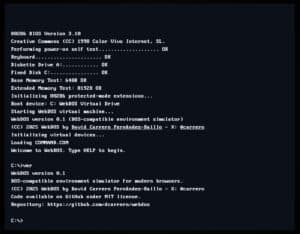An SSL/TLS certificate is a digital credential that authenticates a website’s identity and enables encrypted communication between a server and a browser. While commonly referred to as “SSL certificates,” most websites today use the more advanced TLS (Transport Layer Security) protocol, offering enhanced security and faster performance.
This article dives into the essentials of SSL/TLS certificates, how they work, their benefits, and their importance for businesses.
SSL vs. TLS: Understanding the Difference
While the terms “SSL” and “TLS” are often used interchangeably, they represent different stages in the evolution of secure communication protocols:
- SSL 3.0 (1996): Deprecated due to vulnerabilities.
- TLS 1.0 (1999) and TLS 1.1 (2006): Also outdated and insecure.
- TLS 1.2 (2008): Widely used today, offering robust encryption and flexibility.
- TLS 1.3 (2018): The latest version, providing faster connections and stronger encryption.
Key Differences
- Improved Encryption: TLS uses stronger algorithms compared to SSL.
- Reduced Latency: TLS 1.3 eliminates older protocols, speeding up the handshake process.
The Purpose of SSL/TLS Certificates
SSL/TLS certificates serve three core functions:
- Encryption: Protects data (e.g., passwords, payment information) from being intercepted.
- Authentication: Verifies a website’s identity to prevent impersonation.
- Trust: Provides visual indicators (e.g., HTTPS, padlock icon) that reassure users of a secure connection.
How SSL/TLS Certificates Work
SSL/TLS certificates use a mix of symmetric and asymmetric encryption to establish a secure connection. The process includes:
- Handshake: When a user visits an HTTPS website, the server presents its SSL/TLS certificate.
- Verification: The browser verifies the certificate’s authenticity through a trusted Certificate Authority (CA).
- Session Key: A symmetric session key is created and exchanged securely.
- Encryption: Data is encrypted with the session key for the duration of the connection.
Types of SSL/TLS Certificates
There are three main types of SSL/TLS certificates, each offering different levels of validation:
- Domain Validated (DV):
- Validates domain ownership.
- Fast and affordable.
- Best for personal blogs and internal systems.
- Organization Validated (OV):
- Verifies domain ownership and organizational details.
- Suitable for public-facing websites like schools or NGOs.
- Extended Validation (EV):
- Rigorously checks the organization’s legal and physical presence.
- Ideal for financial institutions and e-commerce platforms.
| Feature | DV | OV | EV |
|---|---|---|---|
| Validation Level | Domain ownership | Domain & organization | Extensive organization checks |
| Cost | Low | Moderate | High |
| Use Case | Blogs, personal sites | Business websites | Banks, online retail |
SSL/TLS Certificates in Action: Industry Applications
E-commerce:
SSL/TLS is critical for protecting sensitive customer data like credit card information. Using EV certificates can enhance trust and reduce cart abandonment.
Healthcare:
Compliance with regulations like HIPAA requires robust encryption to protect patient data.
Finance:
Banks and financial institutions rely on EV certificates to secure client data and prevent phishing attacks.
Education:
Educational portals benefit from OV certificates to safeguard student and faculty data.
Advanced Topics in SSL/TLS
Certificate Transparency:
CT logs provide an open framework for monitoring SSL/TLS certificates, detecting misuse and preventing fraud.
Certificate Chaining:
SSL/TLS certificates link back to a trusted root CA via intermediate certificates, creating a chain of trust.
Quantum-Safe Cryptography:
Future SSL/TLS protocols are being developed to withstand potential threats from quantum computing.
SEO and Business Benefits of SSL/TLS
- Improved Search Rankings: Google prioritizes HTTPS sites in search results.
- Enhanced User Trust: Users are more likely to engage with secure websites.
- Regulatory Compliance: SSL/TLS is mandatory for GDPR, PCI DSS, and HIPAA compliance.
Installing an SSL/TLS Certificate
The installation process involves:
- Generating a Certificate Signing Request (CSR).
- Submitting the CSR to a Certificate Authority.
- Completing validation steps (varies by certificate type).
- Installing the certificate on your server.
Conclusion
SSL/TLS certificates are essential for securing online communication and building user trust. Whether you run a small blog or a global e-commerce site, choosing the right SSL/TLS certificate ensures data protection, improves SEO, and boosts credibility in an increasingly digital world.











